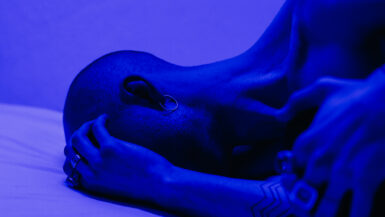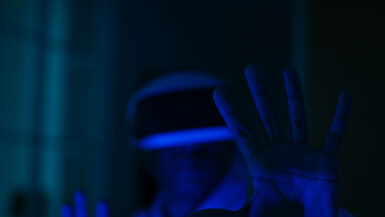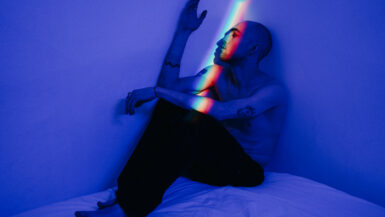In today’s fast-paced, technology-driven world, exposure to blue light has become an inevitable aspect of our daily lives. This prevalent presence of blue light, emitted from our tablets, smartphones, and computer screens, has raised concerns about its potential impact on our sleep patterns and overall productivity. In this article, we delve into the scientific evidence surrounding blue light exposure and its correlation with sleep and mood disorders. Our focus will be on understanding the underlying mechanisms that contribute to these adverse effects, as well as exploring practical solutions for mitigating the impact of blue light on our well-being. Join us as we unravel the complexities of this modern-day conundrum, shedding light on a topic that affects each one of us in our quest for a healthier, more productive life.
Benefits of Blue Light Blocking Technology
As we continue to explore the impact of blue light on sleep and mood disorders, it is essential to understand the potential solutions that can help mitigate these negative effects. One such solution is the use of blue light blocking technology. This technology is designed to filter out the harmful blue light emitted from our digital screens, thereby reducing its negative impact on our sleep and mental health. In this section, we will discuss the various advantages of using blue light blocking technology and how it can contribute to better sleep and improved mood.
Improved Sleep Quality and Duration
Blue light blocking technology has been proven to enhance sleep quality and duration by reducing exposure to blue light in the evening. As mentioned in our previous article, excessive exposure to blue light, particularly during the evening hours, can disrupt our natural sleep patterns, leading to insufficient and poor-quality sleep. By using devices or eyewear equipped with blue light filters, we can minimize this disruption and enjoy a more restful night’s sleep.
Enhanced Mood and Mental Health
In addition to improving sleep, blue light blocking technology has also been linked to better mood and overall mental well-being. Studies have shown that individuals who use blue light blocking devices or eyewear experience a significant reduction in symptoms of depression, anxiety, and other mood disorders. This is primarily because healthy sleep patterns are crucial for maintaining emotional balance and promoting psychological resilience.
Increased Productivity and Focus
By reducing the impact of blue light on our sleep patterns and mood, blue light blocking technology can ultimately lead to increased productivity and focus during our waking hours. A well-rested and mentally balanced individual is more likely to be energized, alert, and able to concentrate on tasks at hand. Thus, incorporating blue light blocking technology into our daily routines can help us become more efficient and effective in both our personal and professional lives.
Protection Against Digital Eye Strain
Lastly, blue light blocking technology can also help alleviate digital eye strain, a common issue faced by individuals who spend extended periods in front of digital screens. Symptoms of digital eye strain include eye discomfort, dryness, and fatigue, all of which can adversely impact our productivity and overall well-being. By filtering out harmful blue light, this technology can reduce the strain on our eyes and promote better visual comfort during screen time.
In summary, blue light blocking technology offers a myriad of benefits that contribute to better sleep, improved mental health, and enhanced productivity. By adopting this technology in our daily lives, we can effectively counteract the detrimental effects of blue light exposure and promote a healthier, more balanced lifestyle.
Understanding Blue Light and Its Sources
To fully comprehend the impact of blue light on sleep and mood disorders, it is crucial to understand the nature of blue light and the primary sources from which we are exposed to it. In this section, we will delve into the characteristics of blue light, its natural occurrence in our environment, and its increasing prevalence through artificial sources such as electronic devices and LED lighting. Armed with this knowledge, we can better understand the potential consequences of excessive blue light exposure and take appropriate measures to safeguard our health.
The Science Behind Blue Light
Blue light is a part of the visible light spectrum, which ranges from violet to red light. It has a wavelength of approximately 380 to 500 nanometers, making it one of the shortest and highest-energy wavelengths in the spectrum. Due to its high energy, blue light has the potential to penetrate deeply into the eye, reaching the retina and potentially causing damage over time. Moreover, blue light exposure has been found to affect the production of melatonin, a hormone that regulates sleep and wakefulness, which in turn can disrupt our natural sleep patterns.
Natural Sources: The Sun and the Sky
The primary natural source of blue light is sunlight. Blue light wavelengths are responsible for the blue color we see in the sky on a clear day, as these wavelengths scatter more easily than other colors in the atmosphere. In moderation, exposure to blue light from sunlight can be beneficial, as it helps regulate our circadian rhythms and can even improve mood and cognitive function. However, excessive exposure, particularly during the evening hours, can interfere with our sleep patterns and contribute to mood disorders.
Artificial Sources: Electronic Devices and LED Lighting
In recent years, the proliferation of artificial sources of blue light has become a growing concern. Electronic devices such as smartphones, tablets, and computer screens emit significant amounts of blue light, and with the increasing amount of time spent using these devices, our exposure to blue light has increased dramatically. LED lighting, which is becoming more prevalent in homes and workplaces, also emits blue light. Prolonged exposure to blue light from these artificial sources, especially during the evening and nighttime hours, can disrupt our sleep patterns and negatively impact our mental health.
Striking a Balance: Managing Blue Light Exposure
Understanding the sources of blue light and its potential consequences is the first step in managing our exposure and mitigating its impact on sleep and mood disorders. By being mindful of our daily interactions with electronic devices and LED lighting, we can take a proactive approach to reduce excessive blue light exposure, especially during the evening hours. Additionally, adopting strategies such as blue light blocking technology, discussed in the previous section, can further help us strike a healthy balance between the benefits and drawbacks of blue light exposure.
Techniques to Reduce Blue Light Exposure
As we have discussed the impact of blue light on sleep and mood disorders, it is crucial to explore various techniques that can help us reduce our exposure to blue light, especially during the evening and nighttime hours. By adopting a combination of these strategies, we can effectively minimize the adverse effects of blue light exposure and promote healthier sleep patterns and mental well-being. In this section, we will delve into several practical and accessible methods to reduce blue light exposure in our daily lives.
Establishing a Digital Curfew
One effective approach to reducing blue light exposure is to establish a digital curfew, where we limit our use of electronic devices during the hours leading up to bedtime. By cutting back on screen time during this critical window, we can help regulate our circadian rhythm, allowing our bodies to naturally prepare for sleep. Implementing a digital curfew not only promotes better sleep but also encourages a more balanced and mindful use of technology in our daily lives.
Embracing Night Mode and Blue Light Filters
Many electronic devices now come equipped with built-in features designed to reduce blue light exposure, such as night mode or blue light filters. By activating these settings, we can adjust the color temperature of our screens, reducing the amount of blue light emitted and creating a more eye-friendly experience. Utilizing these features, especially during the evening hours, can help minimize the impact of blue light on our sleep patterns and overall well-being.
Opting for Blue Light Blocking Eyewear
Another effective technique to reduce blue light exposure is the use of blue light blocking eyewear. These glasses are specifically designed to filter out harmful blue light wavelengths, protecting our eyes from potential damage and promoting better sleep. Blue light blocking eyewear is a practical and convenient solution for individuals who spend extended periods in front of digital screens, whether for work or leisure.
Creating an Eye-Friendly Environment
In addition to the aforementioned techniques, we can also make conscious choices to create a more eye-friendly environment in our homes and workplaces. This can involve selecting warmer, more soothing lighting options, such as incandescent bulbs or warm-white LED lights, which emit less blue light compared to their cooler counterparts. Furthermore, adjusting screen brightness to match ambient lighting and taking regular breaks from screen time can help reduce eye strain and minimize blue light exposure.
Encouraging Natural Light Exposure During the Day
Lastly, it is essential to emphasize the importance of natural light exposure during the day, as it plays a crucial role in regulating our circadian rhythm and maintaining healthy sleep patterns. By making an effort to spend time outdoors or near windows during daylight hours, we can counteract the negative effects of artificial blue light exposure and support our bodies’ natural sleep-wake cycle.
Incorporating these techniques into our daily routines can significantly reduce blue light exposure and its associated risks, promoting better sleep quality, improved mood, and overall well-being. By taking a proactive approach to managing our interaction with digital devices and our environment, we can foster a healthier, more balanced lifestyle in today’s technology-driven world.
How Blue Light Affects Sleep Patterns
In order to gain a deeper understanding of the impact of blue light on sleep and mood disorders, it is crucial to delve into the specific ways in which blue light affects our sleep patterns. By examining the underlying mechanisms that govern these interactions, we can better comprehend the consequences of blue light exposure and devise effective strategies to mitigate its adverse effects on our well-being. In this subsection, we will explore how blue light interacts with our internal biological clock, influences melatonin production, and ultimately disrupts our natural sleep-wake cycle.
The Circadian Rhythm and the Biological Clock
Our bodies operate on a 24-hour cycle known as the circadian rhythm, which governs various physiological processes, including our sleep-wake cycle. At the core of this rhythm lies the biological clock, a complex system of molecular interactions that regulate the timing of these processes. Exposure to light, particularly blue light, plays a crucial role in synchronizing our biological clock with the external environment, ensuring that our bodies are appropriately aligned with the day-night cycle.
Blue Light and Melatonin Production
Melatonin, a hormone produced by the pineal gland, is a key player in regulating our sleep-wake cycle. Its production is governed by our biological clock and is directly influenced by exposure to light. In the presence of blue light, melatonin production is suppressed, signaling to our bodies that it is time to be awake and alert. Conversely, when blue light exposure diminishes, such as during the evening and nighttime hours, melatonin production increases, promoting a sense of drowsiness and preparing the body for sleep.
Disruption of Sleep Patterns Due to Blue Light Exposure
The issue arises when our exposure to blue light extends into the evening and nighttime hours, primarily due to the use of electronic devices and LED lighting. This excessive exposure can disrupt our natural sleep patterns by suppressing melatonin production and interfering with the synchrony of our biological clock. As a result, we may experience difficulty falling asleep, reduced sleep quality, and daytime fatigue, all of which can contribute to mood disorders and a decline in overall well-being.
The Importance of Timing and Intensity of Blue Light Exposure
It is essential to recognize that the timing and intensity of blue light exposure play significant roles in determining its impact on our sleep patterns. While exposure to blue light during the day can be beneficial, supporting alertness and cognitive function, exposure during the evening and nighttime hours can have detrimental effects on our sleep and overall health. By being mindful of our blue light exposure and adopting strategies to minimize its impact, we can effectively safeguard our sleep patterns and promote better mental well-being.
Blue Light Exposure and Mood Disorders
As we continue to examine the impact of blue light on sleep and mood disorders, it becomes increasingly important to understand the potential connection between blue light exposure and various mood disorders. In this subsection, we will delve into the existing research on the relationship between blue light and mood disorders, such as depression, anxiety, and seasonal affective disorder (SAD). By gaining a deeper insight into these connections, we can better comprehend the potential consequences of excessive blue light exposure and develop effective strategies for safeguarding our mental health.
Disrupted Sleep and Its Impact on Mental Health
As discussed in the previous sections, excessive exposure to blue light, particularly during the evening hours, can disrupt our natural sleep patterns, leading to poor-quality sleep and increased daytime fatigue. This disruption in sleep can have significant implications for our mental health, as sleep plays a crucial role in maintaining emotional balance and psychological resilience. Studies have shown that individuals who experience chronic sleep disturbances are more susceptible to developing mood disorders, such as depression and anxiety, highlighting the importance of healthy sleep patterns in promoting mental well-being.
Blue Light and Seasonal Affective Disorder (SAD)
Seasonal Affective Disorder (SAD) is a type of depression that typically occurs during the winter months when exposure to natural light is limited. Interestingly, blue light therapy has been found to be an effective treatment for SAD, as it helps to regulate the circadian rhythm and stimulate the production of serotonin, a neurotransmitter associated with mood regulation. This suggests that while excessive blue light exposure can have negative consequences on sleep and mental health, blue light exposure in controlled settings and at appropriate times may have therapeutic benefits for certain mood disorders.
Chronic Blue Light Exposure and Its Direct Impact on Mood
Recent research has also explored the possibility of a direct link between chronic blue light exposure and mood disorders, independent of sleep disruptions. Some studies have found that prolonged exposure to blue light can trigger neurobiological changes, such as increased inflammation and alterations in neurotransmitter levels, which may contribute to the development of mood disorders. However, further research is needed to fully understand the complex relationship between blue light exposure and mood, and to determine the specific mechanisms by which blue light may influence mental health.
Strategies for Reducing Blue Light Exposure and Protecting Mental Health
Given the potential connection between blue light exposure and mood disorders, it is essential to adopt strategies for reducing excessive blue light exposure and its potential impact on mental health. As previously discussed, techniques such as establishing a digital curfew, utilizing blue light filters on electronic devices, wearing blue light blocking eyewear, and creating an eye-friendly environment can all contribute to a reduction in blue light exposure. Additionally, engaging in activities that promote mental health, such as regular exercise, maintaining a balanced diet, and practicing stress management techniques, can further help to safeguard our mental well-being in today’s technology-driven world.
In summary, understanding the relationship between blue light exposure and mood disorders is crucial in developing effective strategies for managing our exposure to blue light and maintaining mental health. By taking a proactive approach to reducing excessive blue light exposure and promoting healthy sleep patterns, we can minimize the risk of developing mood disorders and foster a healthier, more balanced lifestyle.





Leave a reply